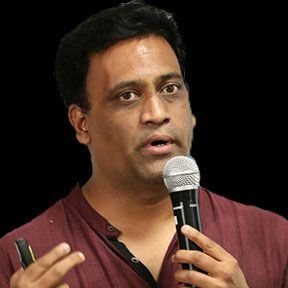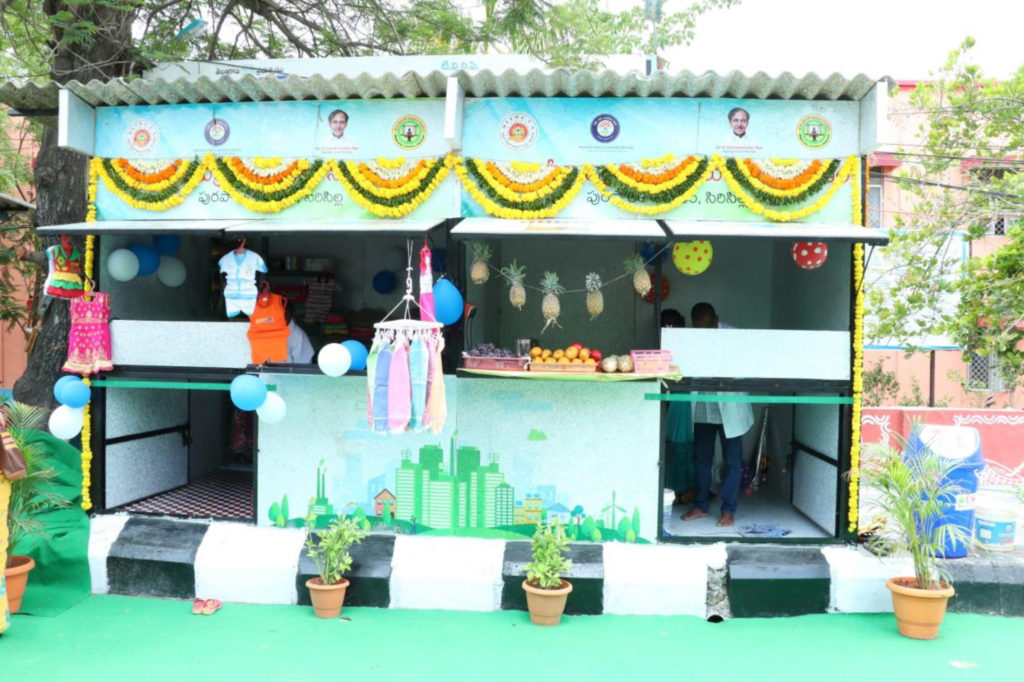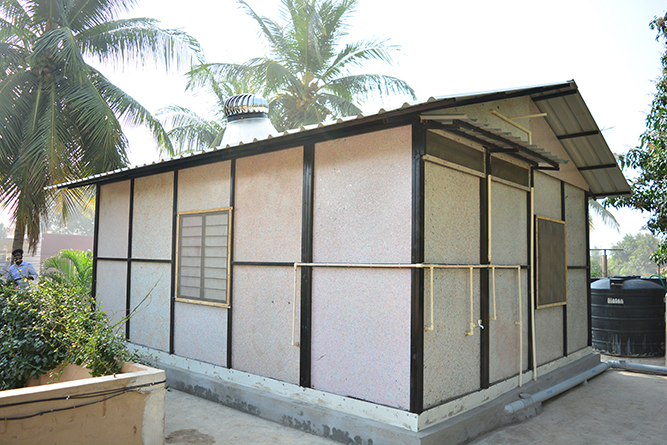Bamboo House India has demonstrated that it’s possible to solve the problem of housing for the poor in a big way if houses are built using plastic waste. The biggest challenge is people’s negative perception. Innovative branding campaigns are needed to fight the negative perception around plastic. This can also help reduce plastic waste in a big way.

Prasanth Lingam, founder of Bamboo House India, shares his experience and how to scale with Benedict Paramanand, Editor of SustainabilityNext.
When did you start your plastic waste projects – homes and kiosks?
We started an organised and scalable model approach of plastic waste construction project in 2017. We wanted to utilise our experience of building bamboo houses and try to solve the plastic waste issue. After lots of deliberations and connecting with subject experts we understood that it is possible to utilise plastic waste ( both LDPE & MLP) and developed compressed boards which are not only fire and water proof but also emission proof with life of over 50 years.
What’s the economics of the house and kiosks. What is the average cost of making them and how much plastic each house consumes?

KISOKS is a project we developed for Government of Telangana which is now being replicated all across the state in a big way. The size of the kiosk we made is 8ft x 8ft and each kiosk consumes roughly 400 kgs of plastic waste. LDPE – Low density poly ethylene for a layman we can relate this technical term with milk packets of any plastic which is flexible and also use of MLP – multilayer plastic , example chips, noodles, chocolate rappers, gutkha packets which has no value. Average size of a 12 ft x 12 ft roughly costs around Rs.1 Lakh and lasts a lifetime and this size of a house can roughly consume around 1000 kgs.
How can this be scaled across India? Can it be a self-sustaining business?
At this stage it’s not easy to replicate on a large scale as there’s a lot of negative perception about living in houses/shelters made with plastic waste. Huge behavioural change is required if this concept has to get acceptance in India. It could work in the West as they are more open to alternatives. But the government can make a beginning and sensitise citizens about the positive side on this innovation and public can follow. As of now we are not able sustain exclusive plastic house activity, but we use these materials as a combination with our bamboo houses.
What is the secret to scaling this to a multi-million dollar business
- Strong government laws on brand owners to responsibly dispose their waste.
- Strong support from government with regular work orders to organisations working in this sphere to provide busines and financial sustainability.
- Waving off GST of recycled plastic products.
- Support from big brands for smaller organisations.
- Large scale display and use of these products/materials in public utility projects enabling public to see its practicality.
- Behavioural changes in consumers and change in market perception towards acceptance of such innovative practices.
If all the above elements come together then we are in for a huge business ahead of them but this is easier said than done.
You have spoken of improving the lives of the plastic pickers. How do you plan to do it?
The backbone of our whole project are waste pickers, they collect all the plastic waste and keep our city clean too. We provide them with fair wages, in fact little higher than market prices. We also make regular purchase of their waste ensuring they have streamlined operations with us. We ensure that we are able to provide waste pickers with bank accounts, life and medical insurance and all other forms of government social benefits which can help them lead a dignified life.
We are continuously trying to partner with like-minded organisations and find means to help them in the best possible way and bring them out of the clutches of middle men who are only exploiting them.
How many plastic houses has your NGO built so far?
In the last two years of full-fledged operations we have built around 30 recycled plastic shelters including kiosks and houses. Private clients are hard to come by as they are not open to living in shelters made out of plastic waste. We understand that is a long journey.
Can it move from an NGO model to a for-profit business? What are the challenges for it?
We in fact are a social enterprise and operate under our parent company “Bamboo House India” which is a for profit social enterprise. Despite being a for profit , we have our own challenges, we are not investor friendly and neither our model is bank loan friendly.
Everyone wants to be part of a story which has mass usage like food, education and mobile phones and other essential. Social innovators need to learn the art of fund raising.
Speaking of the big picture, how can this solve the housing problem of the poor in India? What policy initiatives can you suggest?
This model can surely can be an alternative building material for housing of the poor. We will be solving two problems with one – housing for the poor and reduction in plastic waste. In India, especially in cities, space is a problem. For this we need to go vertical for constructions and our model is not yet proven for multi storied constructions and we need big support from government and institutions to take up R & D and arrive at strong models enabling us and other small organisations to take this innovation national and global.








